| A Taste of Home |
Getting underway with our ride south into Patagonia has been like entering some sort of luxuriant paradise. For the first time in many months we’re at low altitude, forest covers the hills and turquoise water fills the lakes and streams.
The days have been warm and humid. Dew, which is not a phenomenon we have experienced for a very long time wets the tent and bikes at night. There are not just occasional trees, but verdant forests of beech, rich with birdlife and often we ride in the cool of their shade. The altiplano already seems far away, but the memories of our experiences there are indelible and my mind still returns there as I pedal. Gone are the cracked lips, broken fingernails, desert parched skin and dust. We spent 8 months continually on the altiplano, the Atacama Desert and the Puna de Atacama. Our change of environment could not be more profound. It’s exciting to be entering the environment that will define the next few months of our ride.
The region of northern Patagonia that we have resumed our ride in feels so much like home it’s uncanny. From the beech forest, to the scale of the mountains, to the rural dwellings tucked into the edge of the bush and the blackberries that line the highways, reminders of home are everywhere. But things are still different enough that it feels special.
The dynamic of our ride has changed a little, in that good food is abundant, the weather is warm and the days are still long, making camping quite a more relaxed affair. Better availability of food means we’re also eating the best we have in months.
Our first day back on the road from Puerto Varas was a gentle warm up on pavement as we followed the lake edge around to Ensenada at the base of Volcan Osorno, which is the iconic mountain of the region. Most cyclists heading south from Puerto Montt or Varas join the famous Carretera Austral (the Southern Highway), but the majority of this route’s highlights are further south, and the northern half is paved. Seeking the road less travelled, as usual, we decided to get back into the adventurous spirit of travel immediately and take a hiking route pass back to Argentina and then through the eastern side of the mountains to Parque Nacional los Alerces. South of there, we’ll take another remote pass back to Chile.
Warm evening sun on the beach and golden light on the mountain made a nice end to our first day back on the road. We stayed in a campground by the beach, which is not something we’ll do too often as camping prices here are about the same (or more in many cases) as you’d pay for a room in Bolivia or Peru.
Pretty quickly the landscape starts to look like New Zealand’s South Westland.
The ‘frontier’ style of the estancias reminds us a lot of home too, where pioneers have etched their footprint into the land.
Shortly after crossing the Rio Puelo, we turned inland away from the northern fiords and rode up valley, where a series of roads, ferry crossings and tracks would take us over the border to Argentina. The first ferry was a ride-on-ride-off that took us 7km along the length of Lago Tagua Tagua.
Good gravel roads led further into the mountains, following the river which links a string of lakes. There’s a couple of small communities and several campgrounds.
We rode a long afternoon and stopped just before dark on the edge of Lago Blanco. The night was warm and humid. In the morning inversion mist covered the lake, only to burn off as the day soon warmed.
Not a bad breakfast view…
Morning tea, even better…
At Segundo Corral the dirt road ends and our route followed a double track through beech forest, over a rustic little bridge and along to ‘ferry’ crossing number two.
Although this informal ‘port’ appears to be in the middle of nowhere, it gets enough traffic to have a Monday–Friday schedule of eight hours a day. We arrived an hour and a half early for the 2pm, so ate lunch in the shade of the forest and watched trout jump from the lake to catch flies.
Right on 2pm the ferryman arrived on horseback and took four day trippers over to the port on Lago Inferior, before returning twenty minutes later for us.
The afternoon was cloudless and dead calm, as the boat sped along the Rio Puelo and into the toe of the lake.
From the jetty it’s a steep 70 vertical metre push up to the Chilean Officina de Migraciones, where you get your exit stamp. It took the officers about an hour to process ours, partly due to their ridiculous bureaucracy of documenting the bikes, which we realised (after they had eventually finished) did not leave us enough time to make it to the Argentinian post before their 8pm closing time. As is often the case with these remote borders, the actual immigration posts are some distance apart (in this case 13km).
Rules vary as to how long you can take to cross between the border posts. In this case it had to be same day, whereas other passes we’ve crossed between Chile and Argentina allow you as much time as you need, such as Pasos Pircas Negras and Agua Negra (as long as the officers have been notified). We were told that if we didn’t make it over the border and to the Argentinian post by 8pm they might not accept us, and quite likely send us back because they strictly enforce the rules.
Fortunately there’s nice camping just half a kilometre away from the Chilean post at Lago Las Rocas, so we rode over there and spent a nice evening camped by the lake shore ready for an early start and un-rushed day in the morning.
Aside from me standing on a wasp, getting stung, and having my foot swell like mad, and an invasion of piglets, it was an uneventful evening.
And the scenery wasn’t bad…
In the morning we were straight into it. Ahead of us we knew we had about 20km of hiking trail to reach the road at Lago Puelo. The first 3km (approx) is mostly rideable and clear, on a wider trail.
But after that, until you reach the actual border, the trail degenerates. There are several stream crossings and the trail is choked in places with fallen trees, or overgrown at the edges. It’s also often quite steep and rocky or rooty. We often pushed on the section from 3km until we reached the border, but there are small sections of good riding along the way, as well as a few technical stretches that are rideable depending on your skills.
The hard graft of hauling a loaded bike over rough hiking trail is rewarded with really nice forest and some stunning views. In particular the view of the ‘neck’ between Lagos Inferior and Puelo is stunning and the colour and clarity of the water unbelievable.
The Argentinians take much better care of their side (I suppose because it’s in a national park) and once we reached the border it was immediately a lot more rideable. But it’s not over… There’s more tough pushing just before the officina de migraciones and again on the climb after that.
Once you near the top of the final climb (from the Argentinian post) it’s 100% rideable singletrack down to the beach at the head of Lago Puelo.
We grabbed a beer at the first tienda we reached and then headed into town in search of food. An Argentine staple is milanesa napolitana, which is crumbed schnitzel layered with cheese, ham and tomatoes. This we devoured, along with a bowl of chips and a big salad before riding off in the dark in search of a campground and a long sleep.
Do you enjoy our blog content? Find it useful?
Creating content for this site – as much as we love it – adds to travel costs. Every small donation helps, and your contributions motivate us to work on more bicycle travel-related content.
Thanks to Otso Cycles, Big Agnes, Revelate Designs, Kathmandu, Hope Technology, Biomaxa and Pureflow.























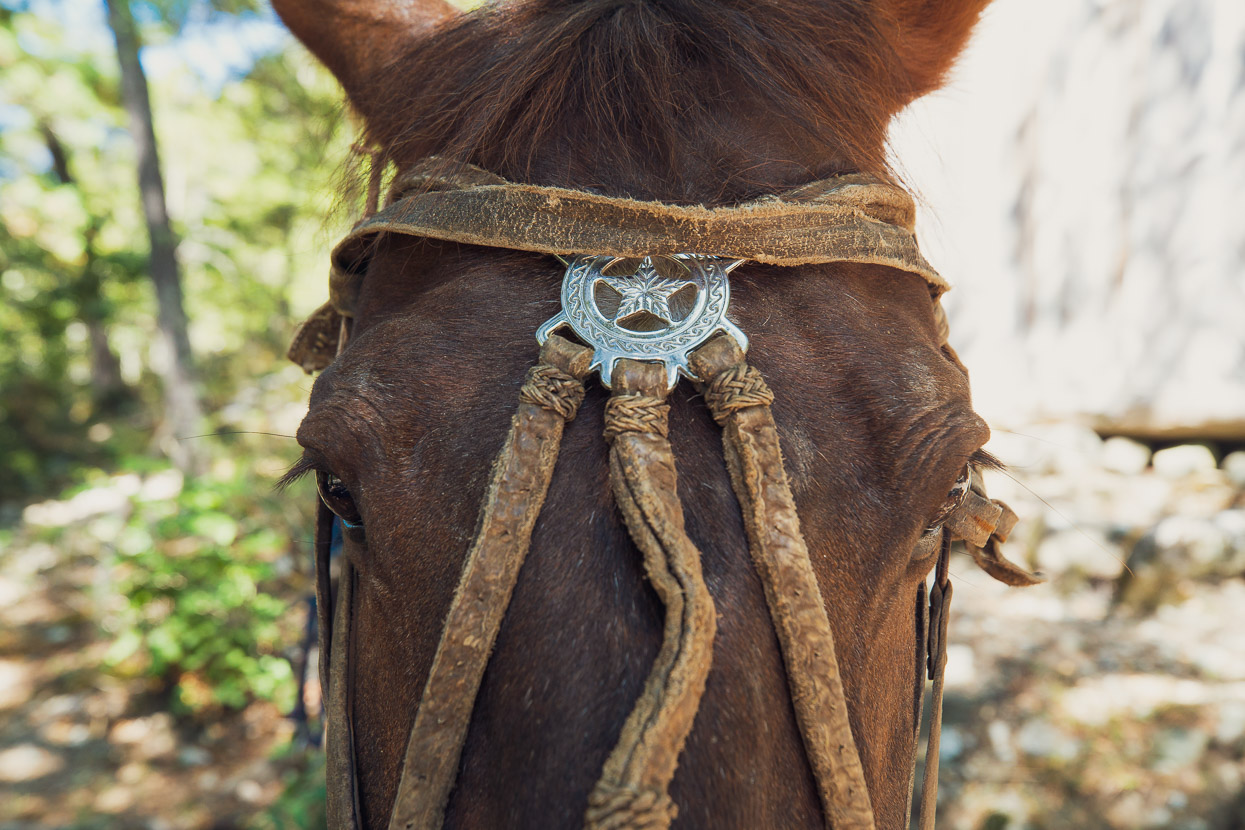


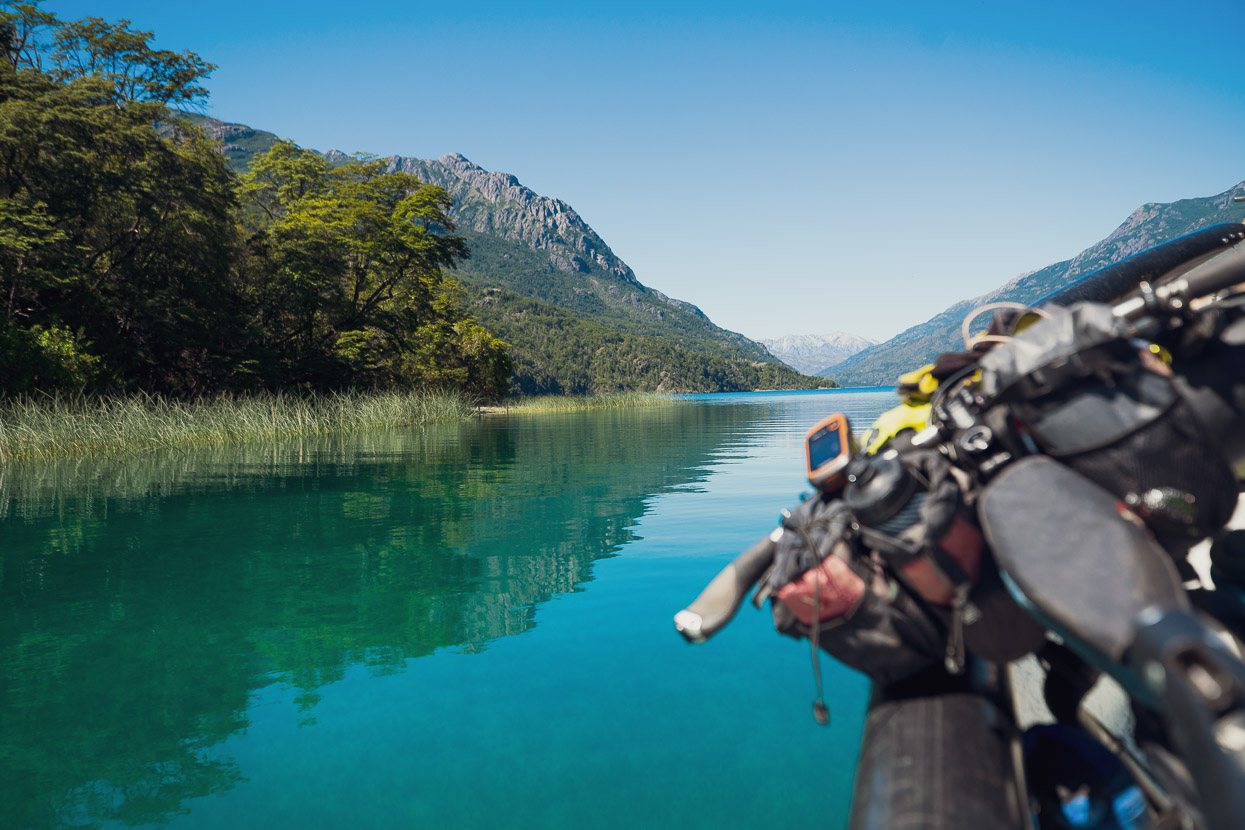


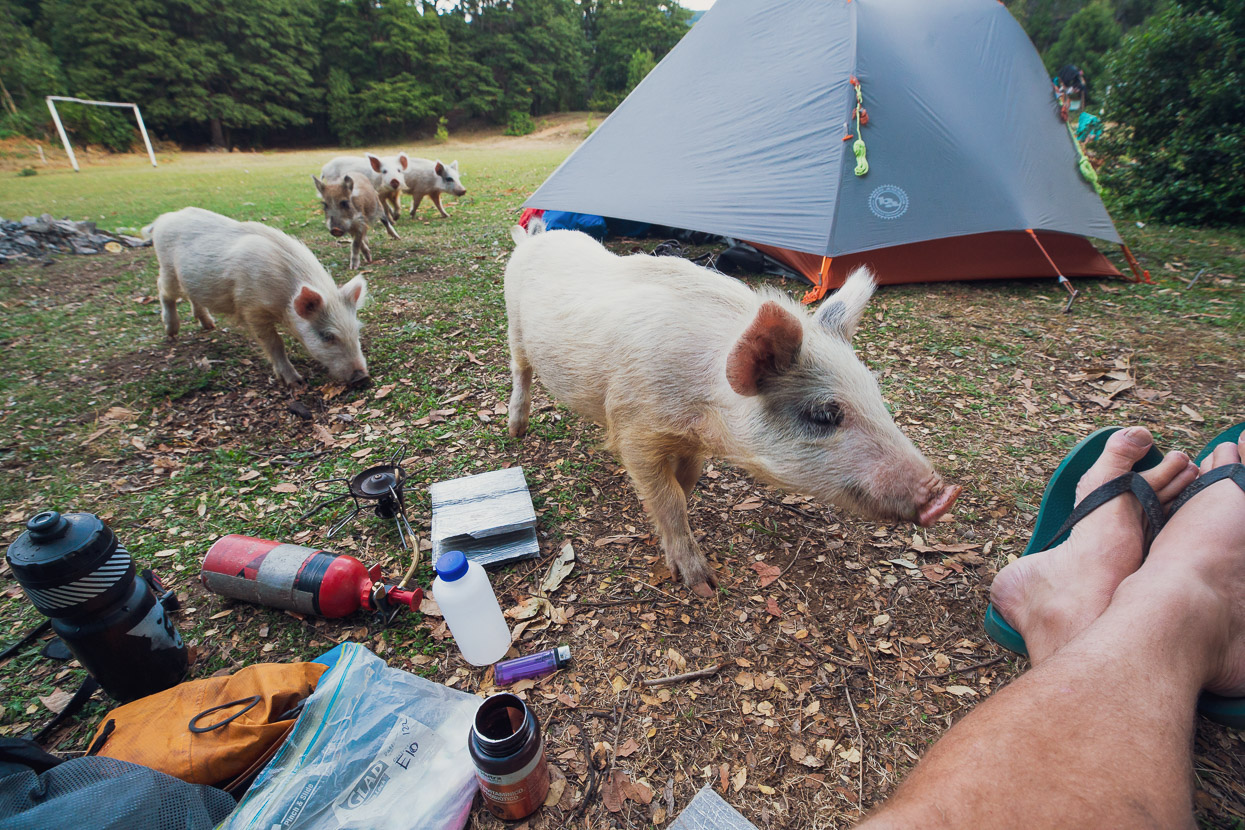
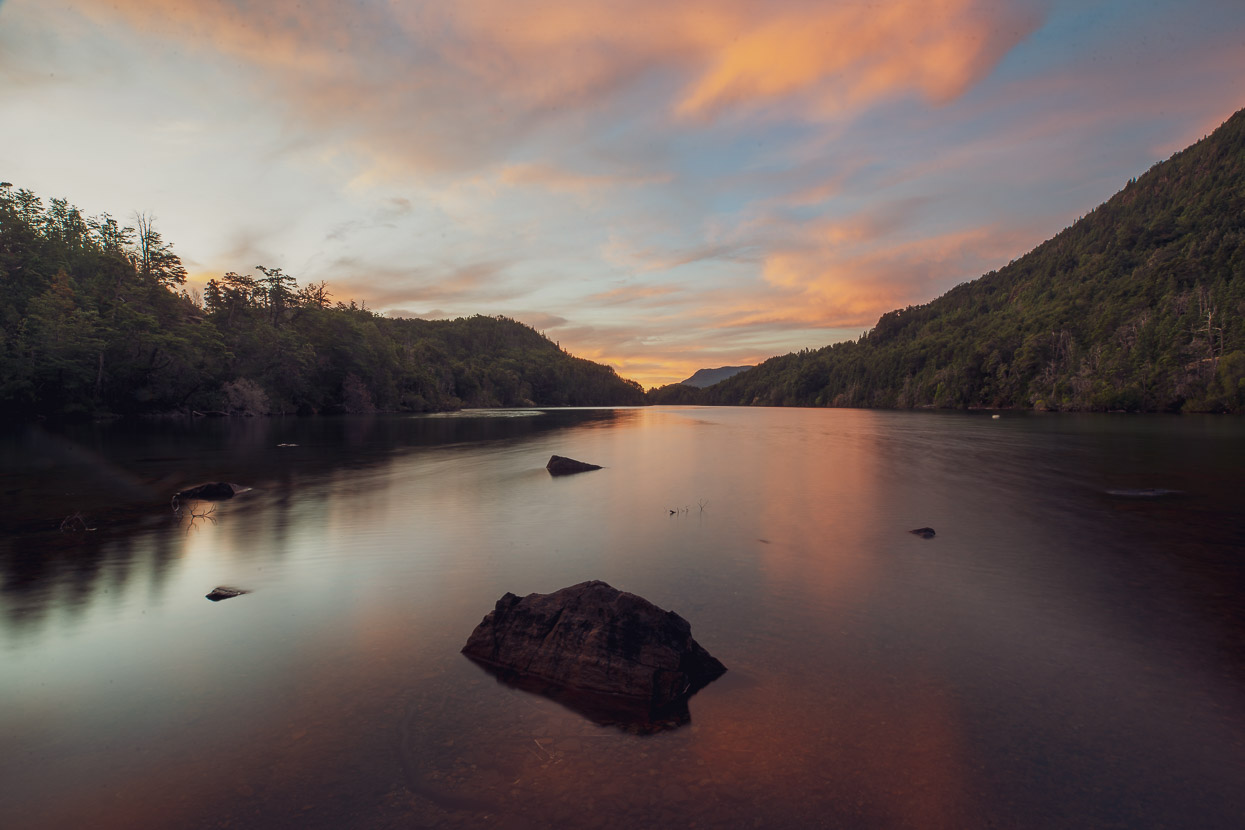
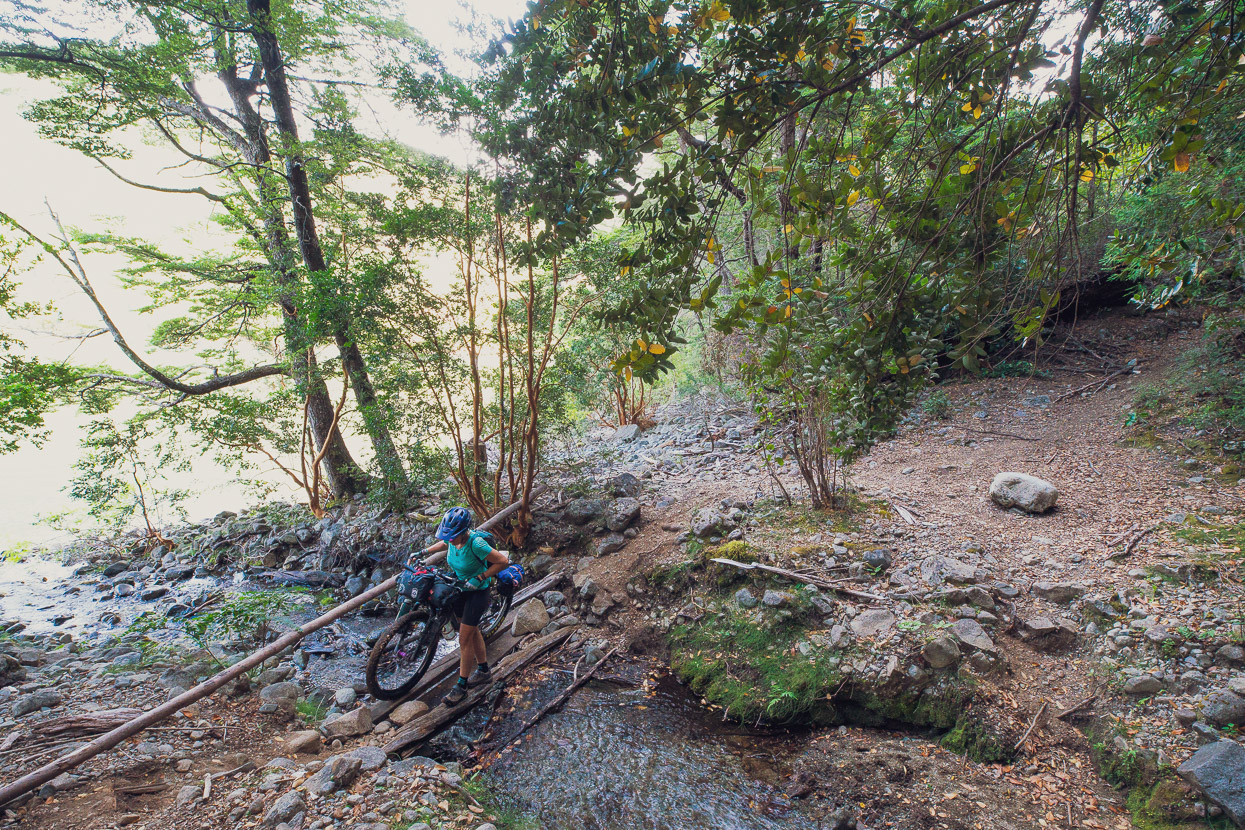








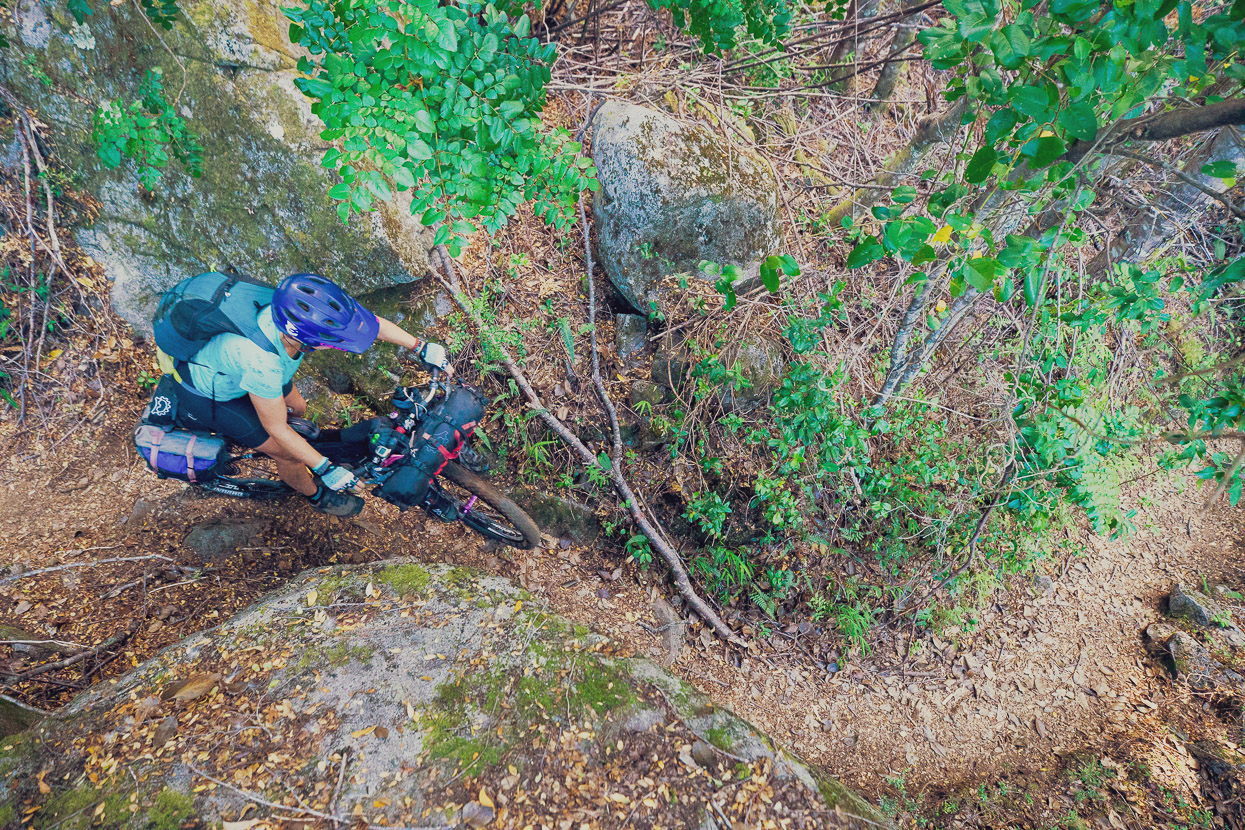


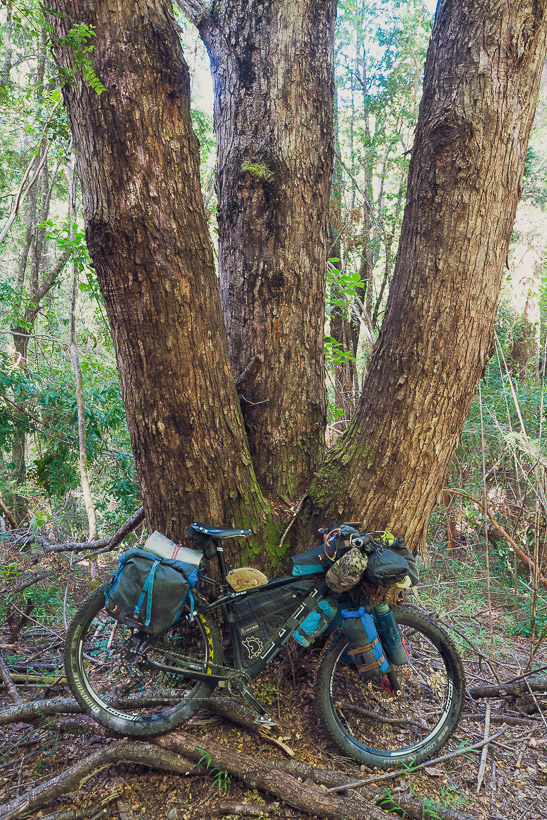
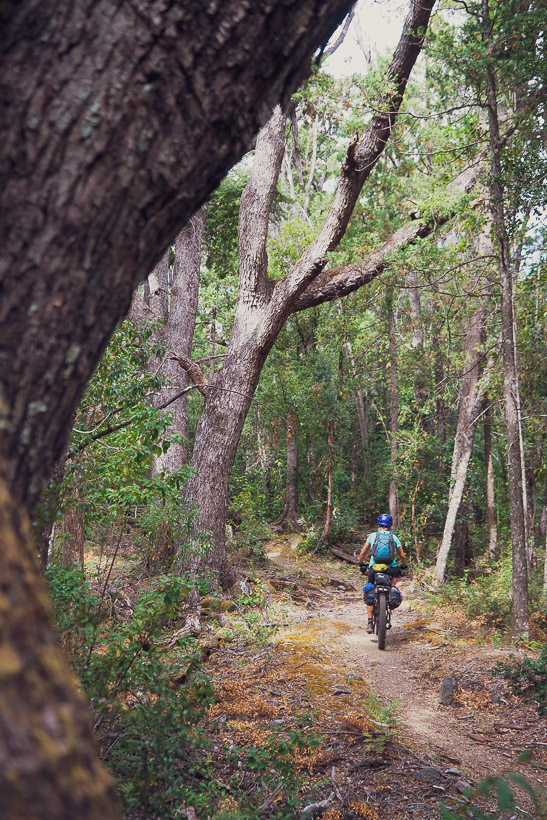


















Hi Guys ,
The Rio Puelo & its are associated lakes are truly a wonder, fortunately plans to dam them for a hydro scheme appears to have been shelved, at least for now.
Cheers
Regards
Peter
Yes – we heard that and indeed it would be an absolute tragedy. It’s a very special region. Hope all’s well with you Peter amid the current situation! We’re self isolating in Tauranga.
I’d love to do this route one day but in the meantime you have given us some great photos and ride story. Looking forward to the next installment.
Alec
Thanks Alec!
Yous OK regards health, safety, and flights?
Yes – home and safe in self isolation now! Thanks.
It’s breathtaking we’ve been living in Chile now for 4 years n we love it! We went to Lago Interior n crossed over to Argentina like u did and we loved it. Camped out for 3 days then hiked around with our 12 year old daughter! Must do it again
Hi Mark and Hana! I’m in the middle of planning a trip in the area. You’ve gotten to El Bolson area twice now, once on Patagonia Beer Trail, and second time using this route. I’m debating which one to take. Would you recommend Bariloche – El Bolson on the Beer Trail, or Puerto Montt – El Bolson following this route? 🙂 Consider that this isn’t the entire trip; I’ll start in Monkey Puzzle Area and will follow your Trevellin – Coyhaque route, and then onto Carreterra Austral for the southern part. My biggest question mark at this point is Bariloche – El Bolson stretch. Either continue onto Beer trail, or cross the border to Peurto Montt and then do this route of yours. What would you suggest?
Hi Andrey, both are really good routes, but they have quite different challenges. If you do not mind a few hours of sometimes technical singletrack and hardish hike a bike, then this route is fantastic for the location, views and singletrack riding. It’s more adventurous. The other has no real technical difficulties, but is also very nice riding. Los Alerces is also very beautiful, but you will see similar views on the Carretera Austral.
Hi Andrey, both are really good routes, but they have quite different challenges. If you do not mind a few hours of sometimes technical singletrack and hardish hike a bike, then this route is fantastic for the location, views and singletrack riding. It’s more adventurous. The other has no real technical difficulties, but is also very nice riding. Los Alerces is also very beautiful, but you will see similar views on the Carretera Austral.
Holà !
Do you think we can take this road to go from El Bolson to Chile?
Amazing photographies,
Thanks for sharing!
Thanks Marie, I do not know the current condition of the route, but you can see from the photos the sort of crossing it is and the difficulties. If you are up for that sort of challenge you should go for it 🙂 It’s easy enough to get to the Argentine border post, so you could ask about conditions there before you commit to the hard part.